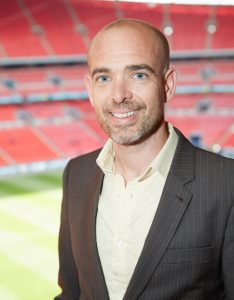Live from Barcelona: EE says sport content places complex demands on mobile networks
Sporting content places the heaviest demands on mobile networks and as such, requires special attention, said EE.
Speaking to SVG Europe in Barcelona at Mobile World Congress, Matt Stagg, head of mobile video and content at BT-owned mobile operator EE, stated that while sport events drive high consumption of mobile data content, because of the fact people want to view them live they are also the most complex to manage from the perspective of a mobile network operator.

Stagg commented: “Now we’re part of BT, we’ve got BT Sport, and sport is the most demanding of contents to have on your network. It’s live and it’s peak traffic. I always say, if you can get sport looking perfect, you can get everything else looking perfect.”
When it launched its 4G network, companies from the mobile network operator space, content providers, and broadcasters worked in silos, Stagg added. This caused problems in interoperability, and so EE decided to open up its roadmap to share with partners across the broadcast spectrum, including Telstra and public broadcasters such as the BBC, plus the likes of YouTube, to ensure that all technologies work together.
He explained: “Fragmentation doesn’t help anybody; it breaks. We share analytics with our partners and vice versa, correlating data under NDA so all can share our roadmaps. We also develop with main content providers – we do a lot with the BBC and YouTube, working on new content and doing joint trials.”
“Mobile operators used to be very closed, and lots of people are still. When we decided to open up the doors, people were saying back then “OTT operators are on our network,” and grumbling about it. We said “our customers pay and they want to watch that content, and if that’s what they want, we’ll provide them with the best experience”.”
He added: “We made an effort very early on with content. People were trying to dabble with content on 3G. Screens were getting bigger, user-generated content was increasing, and we saw that rise and launched our 4G network. However that turned us into a video distribution network; we moved from a comms network where you could send messages and maybe catch a bit of YouTube of the wind was blowing in the right direction, to a full video distribution network overnight. Already our network is filled with over 50% video traffic, and by 2020 we expect that to be 75%.”
On the age-old fear held my many mobile operators since the advent of content on mobile networks, that they will become nothing more than a ‘dumb pipe’ shifting content from providers to end users and adding little more, Stagg stated: “If you want to be the best, you’ve got to be a smart pipe. That means analytics, machine learning; taking the tons of data we generate and mining it.”
EE is using mined data intelligently, particularly in the field of sport. It needs to keep its network working fast and efficiently for its subscribers. Stagg commented: “We use a machine learning company to find out what football matches cause peak traffic. If you’re a sports fan, you want to be there in the stadium, or if you can’t be there you want to be in front of a big screen, or otherwise you’ll watch it anyway you can. We can predict user behaviour and address pain points before they arrive, and can do innovation on products and know it’s going to work. When the analytics show there’s going to be a boost in traffic, we turn on LTE Broadcast (LTE-B), which is an overlay on the network.”
In an example of that use of data mining, in the UEFA Euro 2016 England V Wales match on Thursday 16 June, EE saw a huge spike in traffic on its network, up 65% on the previous day. Stagg commented that as the match was on in the UK during the working day, people would not have been able to hand off to Wi-Fi networks as many offices will not allow that for personal use, hence the increase in traffic on the network during the period of the game. He added that the knowledge gained from that game has helped informed EE’s tactics for the coming World Cup event in Russia, and without LTE-B, certain matches will cause large scale congestion (ie, a poor viewing experience,) for end users in the UK.
EE is currently running trials on the use of HDR to broadcast live sporting events over its network; more on that from SVG Europe soon.
